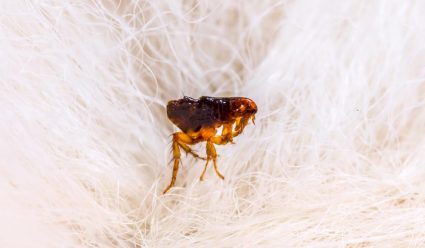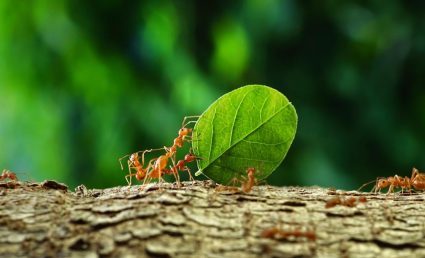
Cockroaches are an unwelcome sight in any home. If you’ve ever wondered, “Why are roaches attracted to me?” you’re not alone. This common question arises when homeowners find themselves battling a roach infestation. Understanding what attracts cockroaches can help you prevent future infestations and maintain a healthier living environment.
Roaches are attracted to humans because we inadvertently provide them with food, water, and shelter. They are drawn to food crumbs, spills, leftovers, pet food, and exposed trash. Moist environments and dark, undisturbed places in our homes also attract roaches. Conditions such as clutter and moisture can make a home more appealing to these pests. Even clean homes can attract roaches due to factors like easy points of entry and regional climate.
What Attracts Roaches to Humans?
Roaches are attracted to humans for three primary reasons: food, water, and shelter. Humans inadvertently provide these resources, making our homes an ideal habitat for these pests.
Roaches are omnivorous scavengers and will consume any organic food source available to them. This includes leftovers, crumbs, and decaying matter. They also have a highly developed sense of smell, which allows them to detect food, mates, and sources of water.
Moreover, roaches are attracted to moisture and can often be found in humid or high-moisture areas around the home, such as basements and bathrooms. In addition to food and water, roaches seek shelter in dark, undisturbed places. These can be found in human homes, such as under appliances and sinks, behind electronics, under closets and cabinets, and in attic vents.
Conditions That Attract Roaches
Several conditions and behaviors can attract roaches to a home. These include:
- Food sources: Roaches are attracted to food crumbs, spills, leftovers, pet food, and exposed trash or recycling. They can also be drawn to decaying organic matter and pet litter boxes.
- Moisture: Roaches prefer dark, moist environments. Leaky pipes, damp basements, standing water, and wet leaves outside your home can all attract roaches.
- Hiding spots: Roaches are attracted to dark, damp areas where they can hide. This includes areas under appliances and sinks, behind electronics, under closets and cabinets, and attic vents.
- Clutter: A cluttered home provides more hiding spots and opportunities for roaches to thrive. Keeping your home tidy and free of clutter can help deter roaches.
Even clean homes can experience infestations due to various factors, such as moisture, easy points of entry, and the climate of the region.
Common Types of Roaches in Homes
The most common types of roaches that infest homes include the German Cockroach, Brown-banded Cockroach, American Cockroach, Oriental Cockroach, Smokybrown Cockroach, and the Australian Cockroach. Each of these species has unique characteristics and behaviors but all are attracted to the food, water, and shelter that human homes provide.
How to Repel Roaches
There are several effective ways to repel roaches. These include using diatomaceous earth, essential oils, baking soda and sugar, boric acid, neem oil, vinegar and tea tree oil, bay leaves, citrus, catnip, and borax and sugar. While these methods can help repel and kill roaches, they may not be sufficient for severe infestations. In such cases, it is recommended to seek the help of a professional pest management team.
Health Risks Associated with Roach Infestations
Roach infestations pose several health risks, including allergic reactions and asthma, disease transmission, food contamination, respiratory problems, and skin allergies. To minimize these health risks, it’s essential to maintain good hygiene practices, use integrated pest management (IPM) strategies, and seek professional help if necessary.
Identifying a Roach Infestation
Signs of a roach infestation include new allergy symptoms, unusual smells, strange smears, droppings, shed skin, egg cases, and the sight of live or dead roaches. If you notice any of these signs, it’s essential to take action immediately to prevent the infestation from growing.
In conclusion, roaches are attracted to humans because we provide them with the resources they need to survive. By understanding what attracts these pests and taking steps to make your home less appealing to them, you can prevent infestations and enjoy a cleaner, healthier living environment.
Frequently Asked Questions
How quickly can a roach infestation grow?
A roach infestation can grow rapidly due to their fast reproductive cycle. A single female roach can produce up to 400 offspring in a year. Therefore, even a small infestation can quickly become a significant problem if left untreated.
Can roaches cause damage to my home?
Yes, roaches can cause damage to your home. They can chew through paper, cardboard, and even thin plastic, which can lead to damage to items such as books, wallpaper, and food packaging. Additionally, their droppings and shed skins can stain surfaces and create an unpleasant odor.
Is it safe to use bug sprays to kill roaches?
While bug sprays can kill roaches, they may not be the best solution for an infestation. Many roaches have developed resistance to common insecticides, making them less effective. Additionally, the chemicals in bug sprays can be harmful to humans and pets if used improperly. It’s generally safer and more effective to use a combination of cleaning practices, traps, and professional pest control services.
Can roaches survive without food and water?
Roaches can survive for up to a month without food and up to two weeks without water. This resilience makes them particularly difficult to eradicate once they’ve infested a home.
Are roaches more active at night?
Yes, roaches are nocturnal creatures and are generally more active at night. This is why homeowners often discover roach infestations when they turn on the lights in a dark room and see the pests scurry away.











